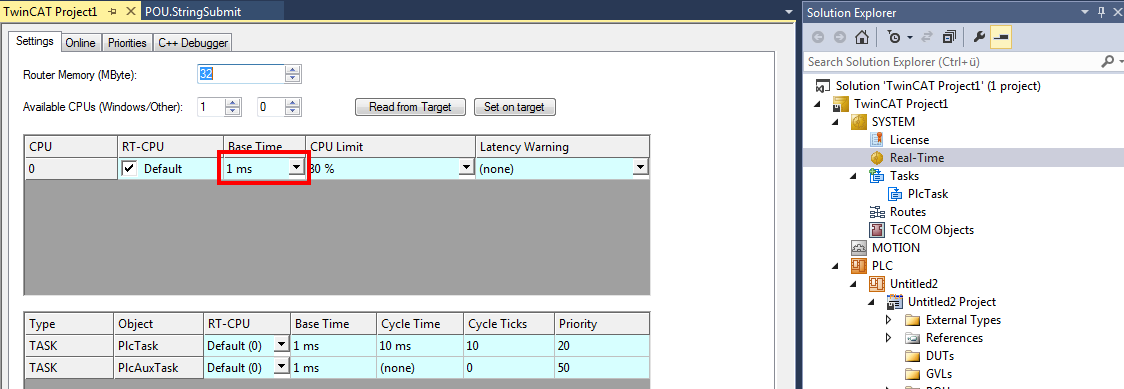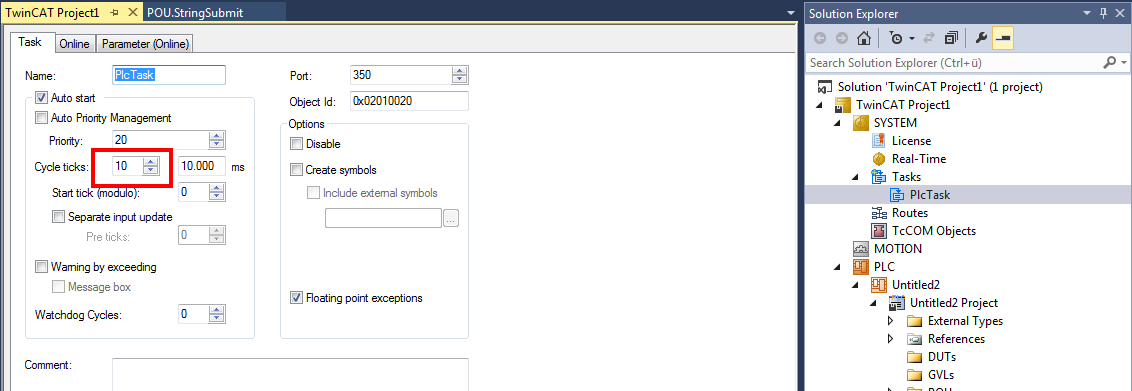Programmer's reference
The programmer's reference provides an overview of the different parameters, interfaces and their methods.
These include:
- TCP/UDP RT TcCOM Parameters: The parameters of the actual TCP/UDP RT module enable the configuration.
The TCP/UDP RT module can be used by different protocols. An InterfacePointer and an interface to be implemented always go hand in hand:
- ITcIoTcpProtocol(Recv): TCP/IP protocol
- ITcIoUdpProtocol(Recv): UDP/IP protocol
- ITcIoArpPingProtocol(Recv): ARP/Ping protocol
For all uses of IP addresses (e.g. "IpAddr"), the most significant elements are displayed in the last position. (Example: 192.168.2.1 -> 01 02 A8 C0)
Performance
The TCP/UDP RT TcCOM object runs in real-time. Thus, the module is also directly dependent on the cycling of the real-time. The frequency with which data can be communicated can therefore be influenced by the cycling of the task used (and therefore also the real-time settings):


Communication via the network interface depends on this cycle. A corresponding call to the CheckReceived() methods (see API documentation) must be made in each cycle.
Incoming data: CheckReceived()
 | Context of the incoming data The customer must ensure that the method CheckReceived is called cyclically. Samples illustrate the procedure in PLC and C++ |
The CheckReveived() method is called cyclically in order to ensure that the data can be provided in the same context as the client project. The protocol-dependent Receive() methods of the customer project are called within this method call, if data have been received.
 | Disconnection of Engineering connection on breakpoints If breakpoints are used, we strongly advise to use different network interfaces, since a breakpoint stops parts of the TwinCAT systems, which may be relevant for the communication with Engineering. |